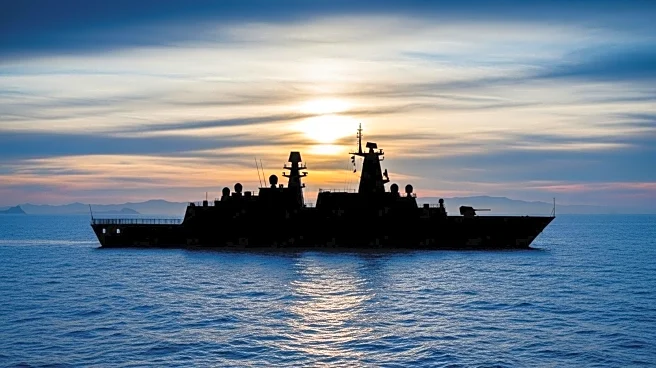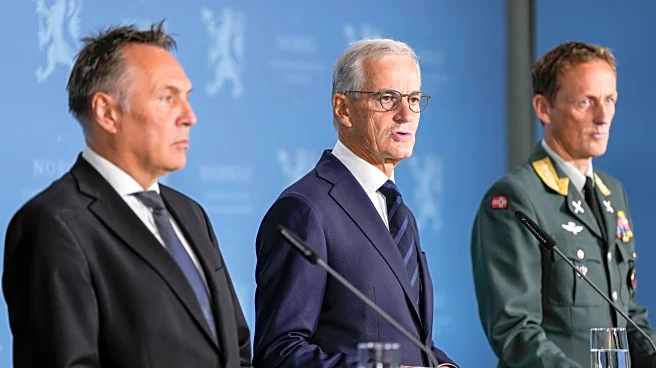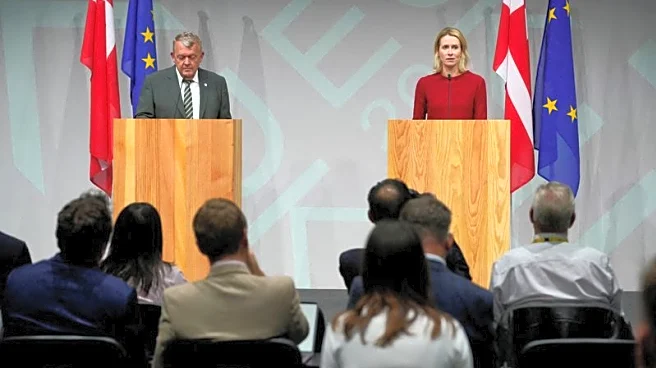What's Happening?
Germany is significantly increasing its defense budget in response to the ongoing conflict in Ukraine, with plans to more than double its spending from approximately $72 billion in 2025 to over $177 billion by 2029. This increase is aimed at bolstering the country's military capabilities, particularly in support of NATO's eastern flank. A key component of this strategy involves the development of a military railway system and the expansion of critical transport infrastructure, including roads and railways. The Central Association of German Seaport Operators (ZDS) has proposed that part of this funding be allocated to enhance the infrastructure of German seaports, which are crucial for military deployment and could serve as the first line of defense in a potential conflict. The ZDS estimates that an initial $3.5 billion is needed to prepare these ports for wartime emergencies, emphasizing the importance of securing vulnerable areas such as quay walls, cyber systems, and railway facilities.
Why It's Important?
The expansion of Germany's defense budget and infrastructure is a significant development in the context of European security, particularly given the ongoing tensions with Russia. By enhancing its military capabilities and infrastructure, Germany aims to strengthen its position within NATO and ensure rapid deployment capabilities in case of a conflict. The focus on seaports highlights the strategic importance of these facilities in military logistics and defense. This move could have broader implications for European security dynamics, potentially influencing defense policies and military spending across the continent. Additionally, the dual-use approach proposed by the ZDS, which caters to both civilian and military needs, underscores the need for versatile infrastructure that can support both economic and defense objectives.
What's Next?
As Germany moves forward with its defense budget expansion, the federal government is expected to finalize plans for the military railway system and other infrastructure projects. The proposal by the ZDS to allocate funds for seaport enhancements will likely be a topic of discussion among policymakers, with potential implications for future defense and infrastructure funding. Stakeholders, including NATO allies and European Union partners, may respond to these developments by reassessing their own defense strategies and infrastructure investments. The outcome of these discussions could shape the future of European defense cooperation and infrastructure development.
Beyond the Headlines
The emphasis on dual-use infrastructure highlights a broader trend towards integrating civilian and military needs in strategic planning. This approach not only enhances military readiness but also supports economic resilience by ensuring that infrastructure investments benefit both sectors. The focus on seaports also reflects the growing importance of maritime logistics in global trade and defense, particularly in light of new climate regulations and shifts in global trade patterns. As Germany navigates these challenges, the balance between military preparedness and economic sustainability will be a key consideration.













